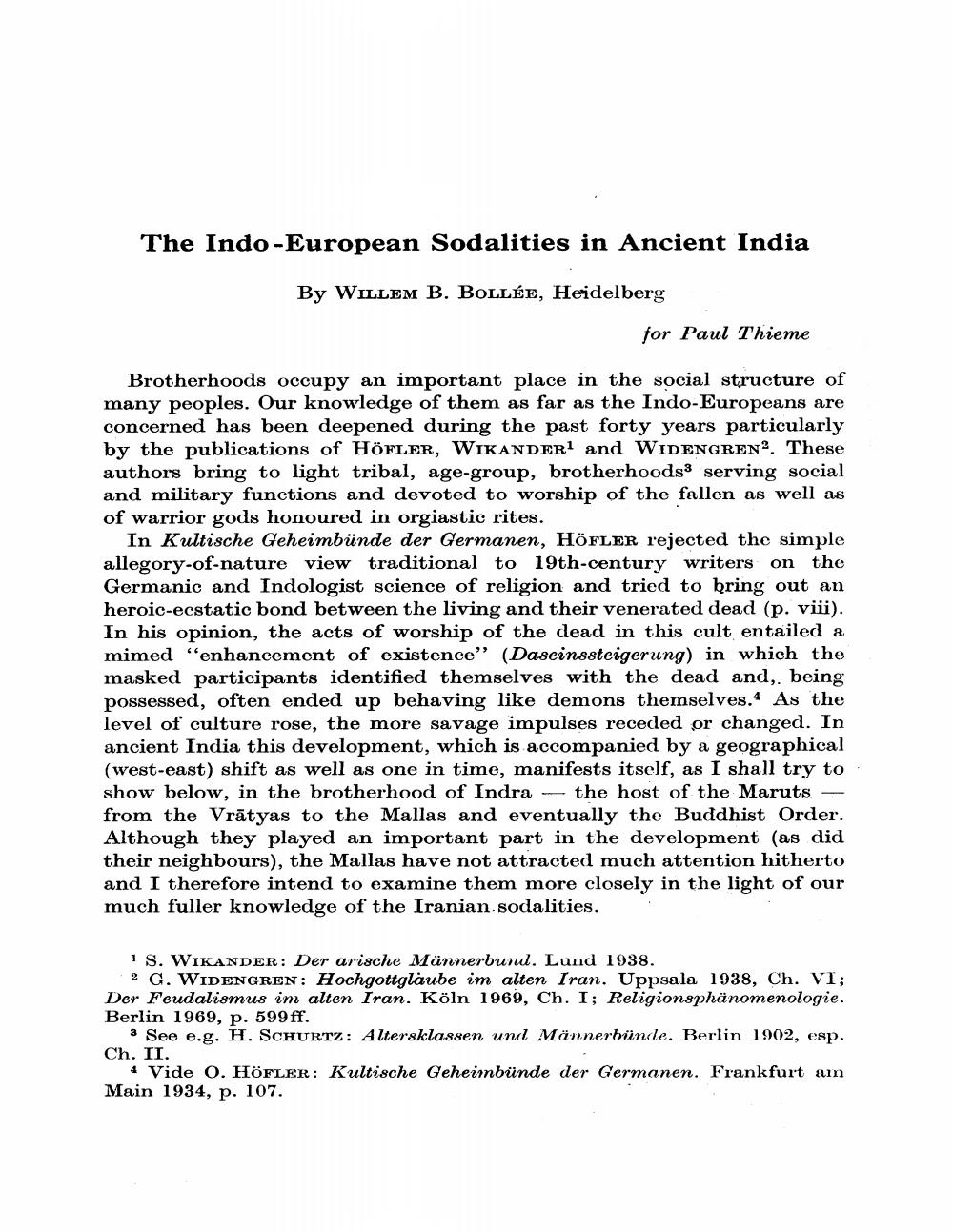Book Title: Indo European Sodalities In Ancient India Author(s): W B Bollee Publisher: W B Bollee View full book textPage 1
________________ The Indo-European Sodalities in Ancient India By WILLEM B. BOLLÉE, Heidelberg for Paul Thieme Brotherhoods occupy an important place in the social structure of many peoples. Our knowledge of them as far as the Indo-Europeans are concerned has been deepened during the past forty years particularly by the publications of HÖFLER, WIKANDER1 and WIDENGREN”. These authors bring to light tribal, age-group, brotherhoods: serving social and military functions and devoted to worship of the fallen as well as of warrior gods honoured in orgiastic rites. In Kultische Geheimbünde der Germanen, HÖFLER rejected the simple allegory-of-nature view traditional to 19th-century writers on the Germanic and Indologist science of religion and tried to bring out an heroic-ecstatic bond between the living and their venerated dead (p. viii). In his opinion, the acts of worship of the dead in this cult entailed a mimed "enhancement of existence" (Daseinssteigerung) in which the masked participants identified themselves with the dead and, being possessed, often ended up behaving like demons themselves. As the level of culture rose, the more savage impulses receded or changed. In ancient India this development, which is accompanied by a geographical (west-east) shift as well as one in time, manifests itself, as I shall try to show below, in the brotherhood of Indra -- the host of the Maruts - from the Vrātyas to the Mallas and eventually the Buddhist Order. Although they played an important part in the development (as did their neighbours), the Mallas have not attracted much attention hitherto and I therefore intend to examine them more closely in the light of our much fuller knowledge of the Iranian sodalities. IS. WIKANDER: Der arische Männerbunul. Lund 1938. 2 G. WIDENGREN: Hochgottglaube im alten Iran. Uppsala 1938, Ch. VI; Der Feudalismus im alten Iran. Köln 1969, Ch. I; Religionsphänomenologie. Berlin 1969, p. 599ff. 3 See e.g. H. SCHURTZ: Altersklassen und Männerbünde. Berlin 1902, esp. Ch. II. 4 Vide O. HÖFLER: Kultische Geheimbünde der Germanen. Frankfurt am Main 1934, p. 107.Page Navigation
1 2 3 4 5 6 7 8 9 10 11 12 ... 20
